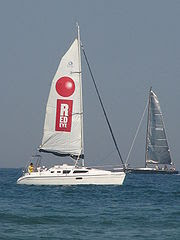




Advertising photography is designed to sell products or services by capturing a viewer’s attention. It can be found in magazines, newspapers, and catalogs. The photographs may stand alone, or they may be combined with words to sell a product or illustrate a concept.
Typically, an art director or advertising agency determines the content of the picture and hires a photographer to create the image. The image may be a still life of a company’s product, or the photograph may try to elicit an emotion the advertiser wishes to associate with a product.
Male and female models are often used to create moods, especially in fashion photography. The photographer visually translates the idea into the final image using a variety of tools and techniques.
He or she charges a daily rate for taking photographs, plus expenses, including the cost of hiring freelance assistants, stylists, and makeup artists when necessary.
Some of the technical elements a photographer must skillfully control include sharpness, exposure, lighting, composition, and color reproduction.




 Advertising photography is designed to sell products or services by capturing a viewer’s attention. It can be found in magazines, newspapers, and catalogs. The photographs may stand alone, or they may be combined with words to sell a product or illustrate a concept.
Typically, an art director or advertising agency determines the content of the picture and hires a photographer to create the image. The image may be a still life of a company’s product, or the photograph may try to elicit an emotion the advertiser wishes to associate with a product.
Male and female models are often used to create moods, especially in fashion photography. The photographer visually translates the idea into the final image using a variety of tools and techniques.
He or she charges a daily rate for taking photographs, plus expenses, including the cost of hiring freelance assistants, stylists, and makeup artists when necessary.
Some of the technical elements a photographer must skillfully control include sharpness, exposure, lighting, composition, and color reproduction.
Advertising photography is designed to sell products or services by capturing a viewer’s attention. It can be found in magazines, newspapers, and catalogs. The photographs may stand alone, or they may be combined with words to sell a product or illustrate a concept.
Typically, an art director or advertising agency determines the content of the picture and hires a photographer to create the image. The image may be a still life of a company’s product, or the photograph may try to elicit an emotion the advertiser wishes to associate with a product.
Male and female models are often used to create moods, especially in fashion photography. The photographer visually translates the idea into the final image using a variety of tools and techniques.
He or she charges a daily rate for taking photographs, plus expenses, including the cost of hiring freelance assistants, stylists, and makeup artists when necessary.
Some of the technical elements a photographer must skillfully control include sharpness, exposure, lighting, composition, and color reproduction.






No comments:
Post a Comment